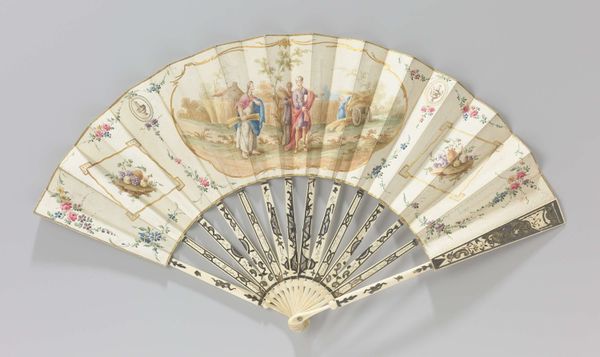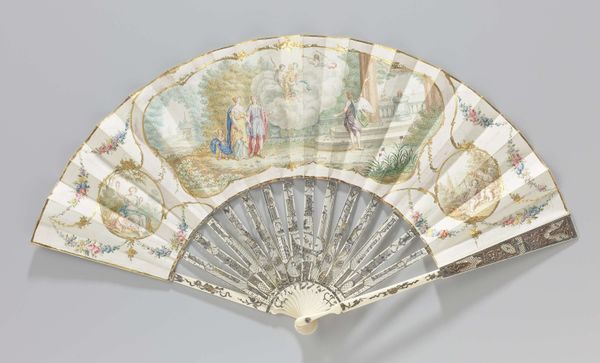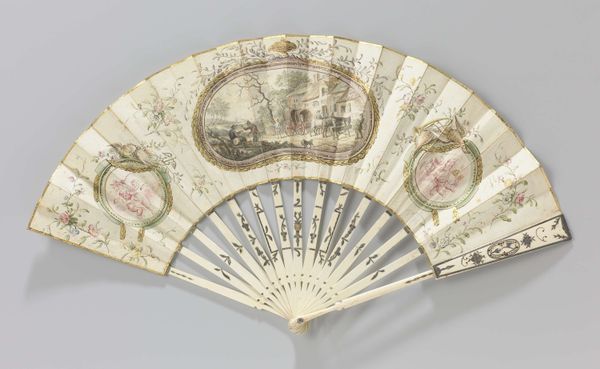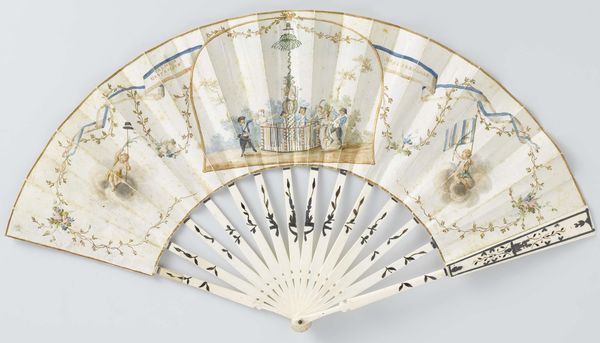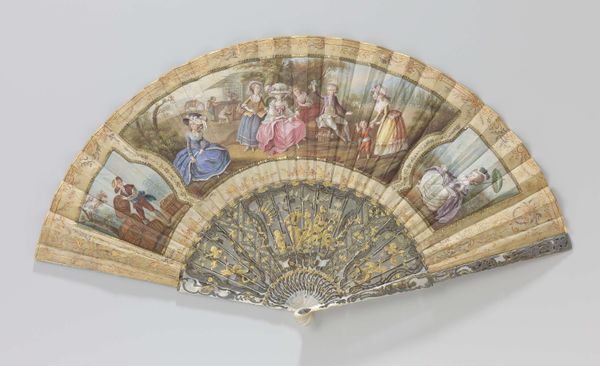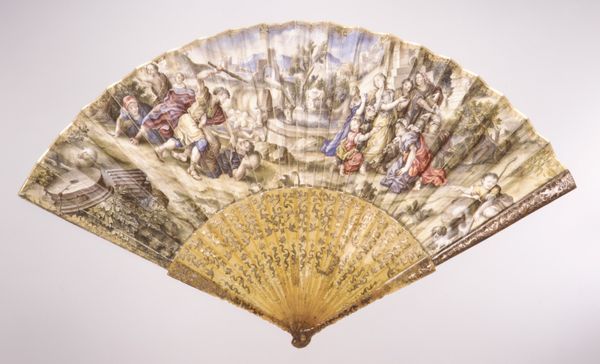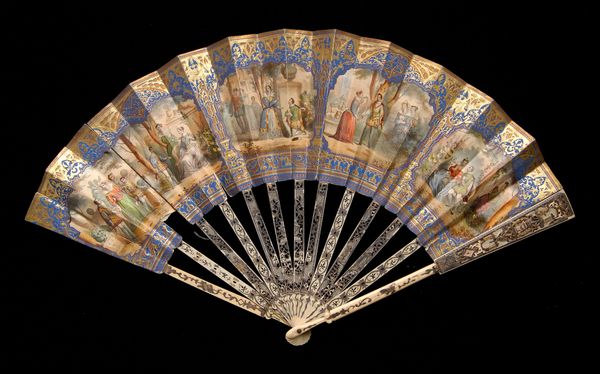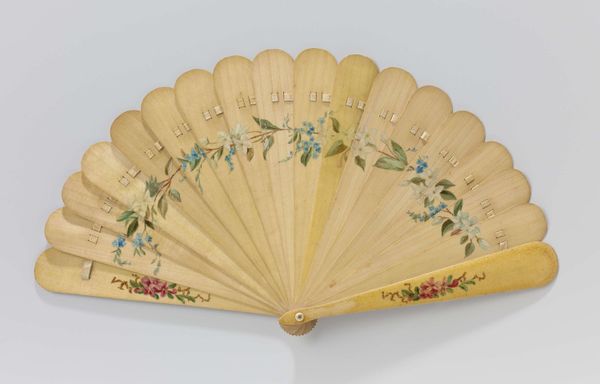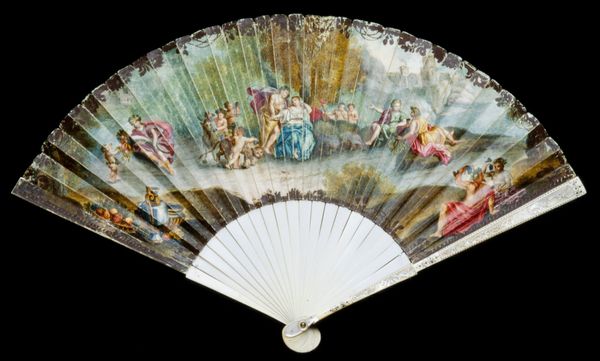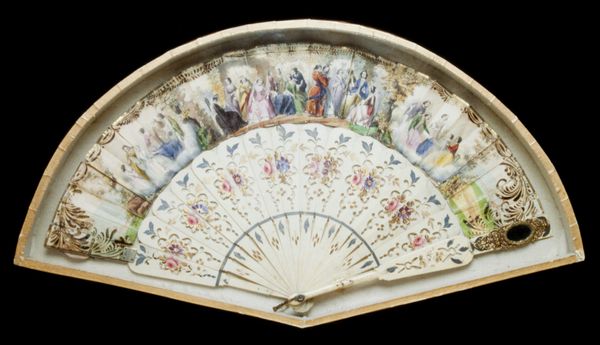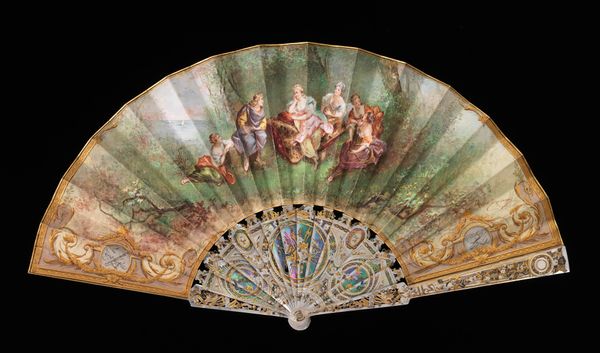
Vouwwaaier met een blad waarop in aquarel een buitenpartij met een dansend paar en doedelzakspelers, op een montuur van parelmoer met 'métal en quattre couleurs' c. 1775 - 1780
0:00
0:00
Dimensions: span 49 cm, length 26.9 cm
Copyright: Rijks Museum: Open Domain
Editor: Here we have an exquisitely painted folding fan, crafted around 1775-1780 by an anonymous artist. The watercolor scene atop a mother-of-pearl frame depicts a joyous outdoor gathering. The whole object evokes a feeling of aristocratic leisure, of playful elegance. What strikes you most when you look at this delicate scene? Curator: Ah, yes, the whisper of silk and the click of pearl! To me, it’s a captured moment— a fleeting glimpse into a world obsessed with artifice and pleasure. Look at the scene – the dancers, the musicians. The scene feels light-hearted, but almost too picture-perfect to be natural. Editor: So, you're saying that the casual atmosphere is staged? I'm curious about how the fan itself contributes to this sense of performative elegance. Curator: Exactly. This fan isn't just a pretty accessory; it’s a statement, a prop in the grand theater of 18th-century high society. I find it endlessly fascinating how these decorative objects offer hints about lives lived with an acute awareness of being seen, and judged! Isn't it strange how something designed to be used as relief from summer's heat ends up feeling… so studied? Editor: That's such an interesting perspective! I hadn't considered the performative aspect of even owning such a decorative object. Curator: Indeed. It makes you wonder, what secrets were hidden behind these painted smiles? What truths were concealed by the fluttering of such fans? Editor: Well, I'll definitely be looking at fans differently now, understanding them not just as pretty objects, but as artifacts imbued with meaning and social commentary.
Comments
No comments
Be the first to comment and join the conversation on the ultimate creative platform.
